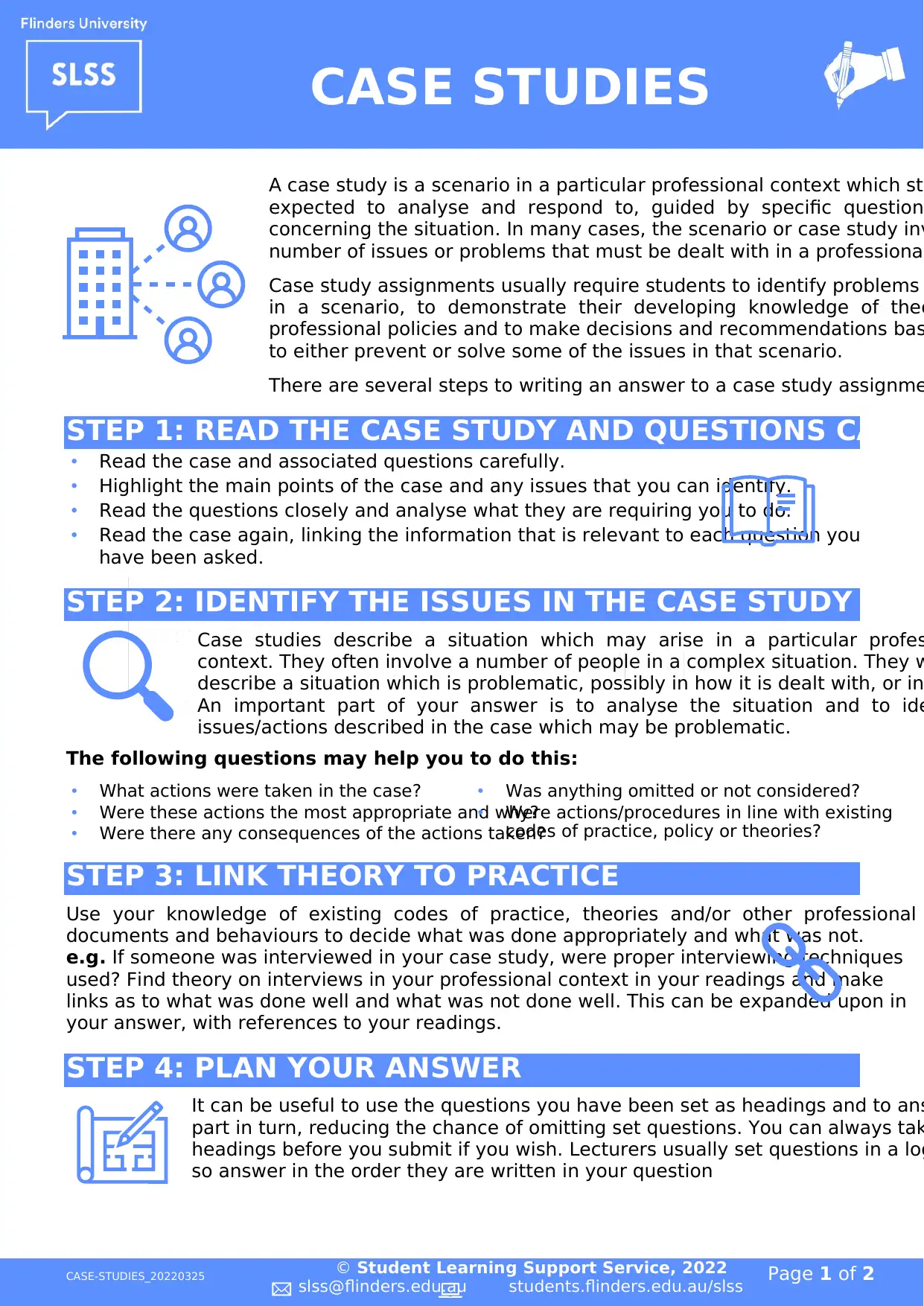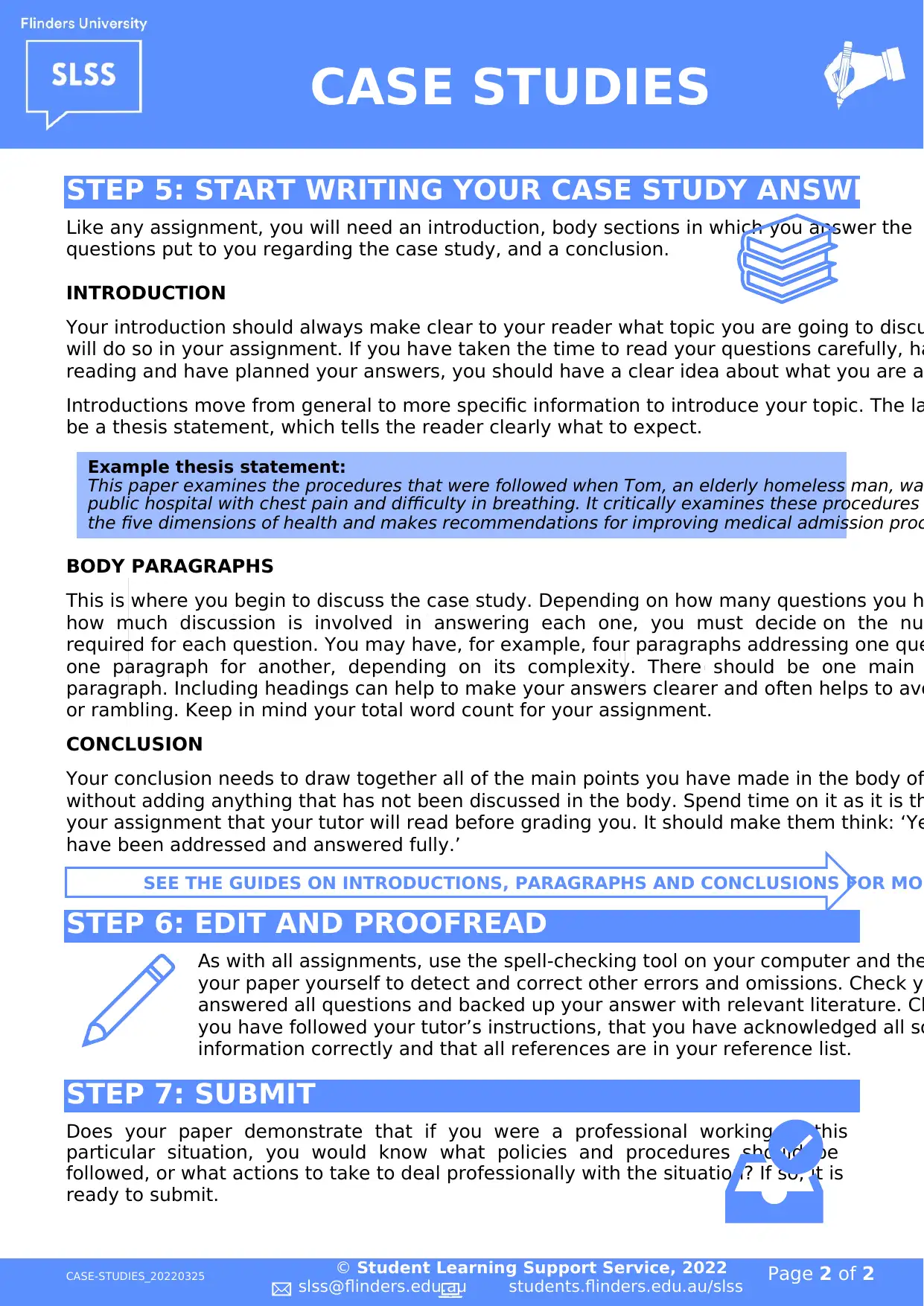Case Study Analysis: Strategies for Professional Development
VerifiedAdded on 2023/05/22
|2
|1050
|473
Homework Assignment
AI Summary
This document provides a comprehensive guide to case study analysis, outlining a step-by-step approach for students. It begins by emphasizing the importance of careful reading and understanding the case study and associated questions. The guide then details how to identify key issues within the scenario, encouraging students to consider the actions taken, their appropriateness, and any consequences. It stresses the significance of linking theory to practice by utilizing existing codes, theories, and professional documents. The guide also provides advice on planning the answer, structuring the assignment with an introduction, body paragraphs, and conclusion. It offers insights on writing effective introductions with a clear thesis statement and constructing well-organized body paragraphs with a single main point. The document concludes by highlighting the importance of editing, proofreading, and ensuring the assignment demonstrates professional understanding before submission. The overall goal is to equip students with the skills needed to effectively analyze case studies and provide well-supported solutions, ultimately enhancing their professional development.
1 out of 2








![[object Object]](/_next/static/media/star-bottom.7253800d.svg)